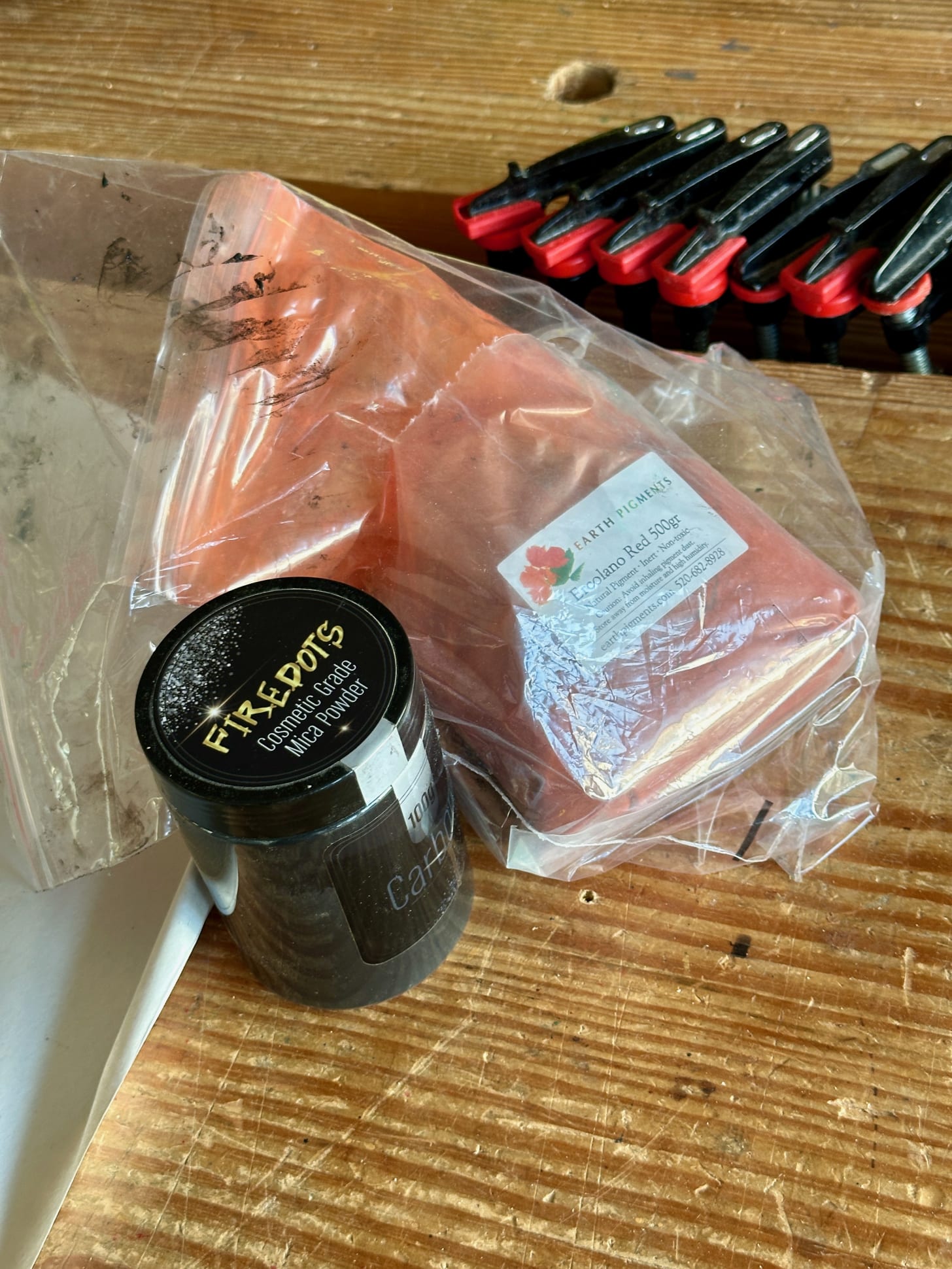Years ago, Peter Follansbee opened my eyes to how quickly furniture darkens when it is exposed to concentrated fire smoke, the elements and regular handling. Pieces that he built new for Plimoth Plantation (now Plimoth Patuxet Museums) looked 300 years old after spending only a few years in the reproduction homes at the museum.
I’ve spent the last few years dabbling in ways to accelerate this process, mostly by mixing carbon black (literal soot) with jojoba oil, which is chemically similar to the oil we secrete called sebum.
My experiments were hasty. I got some encouraging results on test boards, but I was always pulled away by some other project.
But now that we have a lot of pigments in stock (thanks to Nick Kroll’s forthcoming book “Make Fresh Milk Paint”) I took another crack at it today.
I started first with a 1:1 mixture of refined linseed oil and carbon black. It went on like a paste – I could probably reduce the soot content in the mixture. But it did the job. However, the black was pretty cold looking and lacked the “glow” I like in old pieces.
So I tried the following mixture: 2 parts refined linseed oil, 1 part carbon black and 1 part Ercolano red pigment. Again, it made a thick paste that was probably too strong, but it was effective.
Immediately I could see how this mixture has promise.
Now I just have to wait for a couple hours to see if the oil keeps the pigment from rubbing off on your clothes. If the color rubs off too much, I’ll add some beeswax to the mixture, or I’ll seal the finish with shellac after the oil cures after a couple weeks.
With any luck, I’ll be able to use the finish on an Irish chair I’ll be building in a class that starts Saturday. Stay tuned.
.png)






